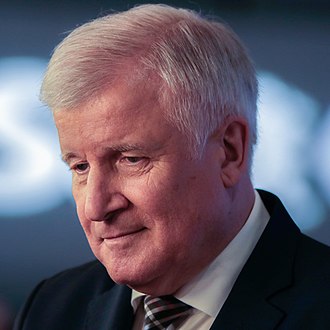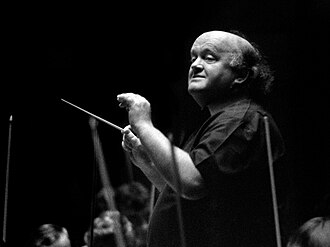Discover Your Roots
SIGN UPDiscover Your Roots
SIGN UPHorst is a male name of German origin that means "Man From The Woods." It is derived from Old High German, signifying "man from the forest," "bosk," or "brushwood." In modern German, "Horst" also translates to the nest of an eagle or other bird. The name is commonly used in German-speaking countries and has been borne by notable individuals across various fields. Some prominent figures with the name include Horst Bellingrodt, a Colombian Olympic sports shooter, Horst P. Horst, a renowned German photographer, and Horst Seehofer, a minister-president of Bavaria. Horst holds a strong connection to nature and carries a sense of strength and rootedness, making it a meaningful and impactful name for boys of German descent.

Horst Köhler, born on February 22, 1943, was a prominent German politician and economist. He served as the President of Germany from 2004 to 2010. Köhler was elected to his first five-year term in 2004 and reelected for a second term in 2009. However, he resigned in 2010 due to a controversy over a comment concerning the German Armed Forces during a visit to troops in Afghanistan. Prior to his presidency, Köhler had a distinguished career in politics, civil service, and banking. He held notable positions such as head of the International Monetary Fund (IMF) from 2000 to 2004 and president of the European Bank for Reconstruction and Development from 1998 to 2000. Köhler's early life was marked by displacement and relocation, as his family fled from Bessarabia during World War II and eventually settled in Ludwigsburg. He pursued higher education, obtaining a doctorate in economics and political sciences from the University of Tübingen. Köhler's civil service career began in 1976, and he held various roles in the Federal Ministry of Economics and the chancellery of the state government of Schleswig-Holstein. He later served as Secretary of State in the Federal Ministry of Finance, where he played a significant role in international economic negotiations and the European Monetary Union. From 1993 to 1998, Kö

Horst Lorenz Seehofer, born on July 4, 1949, is a prominent German politician who has held various significant positions in the government. He served as the Minister for the Interior, Building, and Community under Chancellor Angela Merkel from 2018 to 2021. Seehofer is a member of the Christian Social Union (CSU) and was the 18th minister-president of Bavaria from 2008 to 2018. He also served as the Leader of the Christian Social Union in Bavaria from 2008 to 2019. Seehofer began his political career when he was first elected to the Bundestag in 1980. Over the years, he held key ministerial positions, including Minister for Health and Social Security, Minister for Food, Agriculture, and Consumer Protection, and President of the Bundesrat from 2011 to 2012. Throughout his career, Seehofer has been known for his strong stance on issues such as the migrant crisis, advocating for a federal cap on the number of refugees accepted by the German government. His career has been marked by significant political developments, including disputes with Chancellor Merkel over migrant policies. Despite facing challenges within his party and the government, Seehofer's influence and contributions to German politics have been substantial.

Horst Janssen (14 November 1929 – 31 August 1995) was a prolific German draftsman, printmaker, and illustrator known for his extensive body of work, including drawings, etchings, woodcuts, lithographs, and wood engravings. His artistic journey began at the Landeskunstschule Hamburg under the tutelage of Alfred Mahlau, where he exhibited exceptional talent. He gained recognition with his first publication in the newsweekly Die Zeit in 1947, and continued to create a diverse range of artwork. Throughout his career, Janssen received numerous accolades, including the Edwin Scharff Prize in 1966 and the Grand Prize in graphic art at the Venice Biennale in 1968. Despite personal struggles and a turbulent personal life, his dedication to printmaking and artistic expression remained steadfast. The Horst Janssen Museum in his hometown of Oldenburg preserves and showcases his remarkable legacy, while his works are exhibited in major museums worldwide. Janssen's art continues to captivate audiences with its unique blend of creativity, emotion, and technical mastery, cementing his status as a celebrated figure in the art world.

Horst Walter Stein (2 May 1928 – 27 July 2008) was a highly regarded German conductor known for his exceptional talent and contributions to the world of classical music. Stein's musical journey began in Elberfeld, Germany, and he honed his skills in piano, oboe, and singing during his school years in Frankfurt. He furthered his education at the university in Cologne, studying under the guidance of renowned composers such as Philipp Jarnach, a disciple of Busoni. Throughout his illustrious career, Stein held prestigious positions at various opera houses and orchestras, including the Berlin State Opera, Hamburg State Opera, Mannheim National Theatre, and Vienna State Opera.A remarkable highlight of his career was his association with the Bayreuth Festival, where he worked as a conducting assistant and later conducted numerous performances. Stein's musical prowess extended to his recordings, particularly showcasing the works of Max Reger and German Romantic period compositions, earning him widespread acclaim. Additionally, he devoted significant time to mentor and train aspiring conductors.In recognition of his outstanding contributions to the music world, Stein received several honors and awards, including the Bruckner ring from the Vienna Symphony Orchestra and the Austrian Decoration for Science and Art. His legacy continues to inspire and enrich the world of classical music, leaving an indelible mark on generations of music enthusiasts. Horst Walter Stein's remarkable legacy lives on, celebrated through his enduring recordings and the countless lives he touched through his musical mastery

Horst Sigmund Rosenthal (10 August 1915 – 11 September 1942) was a German-born cartoonist of Jewish descent, best known for his 1942 French comic book, Mickey au Camp de Gurs (Mickey Mouse in the Gurs Internment Camp). Rosenthal created this work while he was a prisoner at the Gurs internment camp in France during World War II. He also authored two other French comic books while incarcerated in Gurs, La Journée d'un Hébergé (A Day in the Life of a Camp Resident) and Petit Guide à travers le Camp de Gurs (Little Guide Through the Gurs Camp). These works were first published in October 2014, 72 years after they were written. Rosenthal's artistic endeavors were a source of resilience and coping for himself and fellow detainees during the difficult living conditions at Gurs. Despite not surviving the war, his three comic books continue to be a testament to the human spirit and have been preserved and published, contributing to his enduring legacy. Rosenthal's unique and poignant works provide a glimpse into the hardships faced by those imprisoned during this dark period in history.
All images displayed on this page are sourced from Wikipedia or Wikimedia Commons.We use these images under their respective Creative Commons or public domain licenses. Wherever applicable, author attributions and license information are provided. If you believe an image is used incorrectly or outside its license terms, please contact us so that we can review and correct the issue.